#edited images
Text
Tidbit: The "Threshold" Effect of Desaturated Objects Due to Increased Contrast
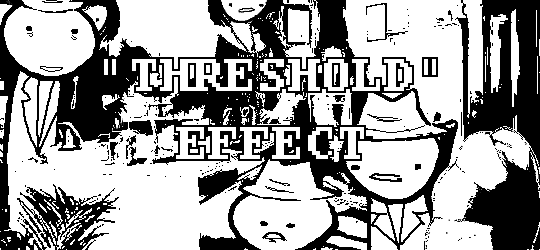
If you've ever asked how to replicate an effect like this...
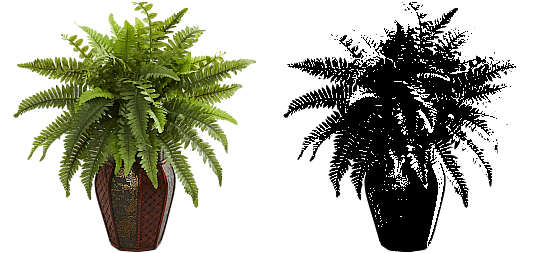
...it's likely someone told you to apply the threshold filter, which converts any light colors to pure white, and any dark colors to pure black. And it's perfectly fine to do so. It's simple, straightforward, efficient. But I take issue with the assertion that it's definitively the only conceivable way Hussie did it when the evidence points to the contrary. Scrutinize the following examples under a microscope:
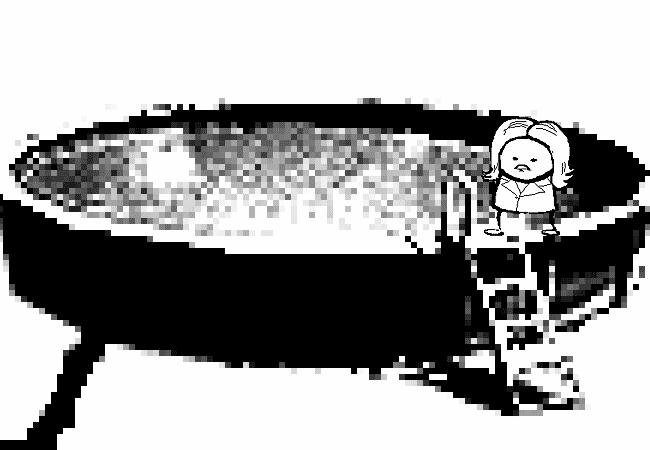

Did you see it? The singular detail that distinguishes these images from ones that have been thresholded? Congratulations if you noticed that these contain not only black and white pixels, but GRAY pixels as well! A threshold filter's conversion is binary; a pixel is either black, or it is white. No in-between. The presence of these gray values rules out its use, then.
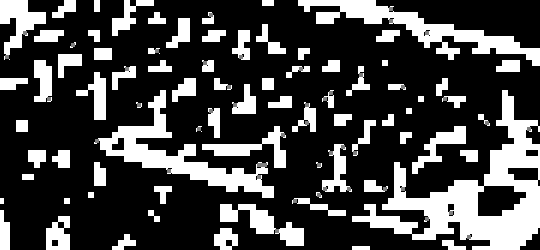
One thing is clear, at least: these images are black and white in the traditional sense of the term, i.e. "grayscale", even if it's in drastic form. They've been stripped of any color, hue, chroma. Completely desaturated, in other words.
So from this observation, we can reason that they were converted to be grayscale at some point in the process of editing.

Of course, this is still lacking in the pure black and pure white departments. If only there was a way to adjust the intensity levels and push them both to their extremes... oh wait, THERE IS! Using the Levels adjustment tool!

Pushing the black input levels slider to the right makes all dark colors turn darker, and conversely, pushing the white input levels slider to the left makes any light colors turn lighter. This is a great way of increasing the contrast and adjusting the brightness. Speaking of which, the Brightness/Contrast adjustment tool in Photoshop with "Use Legacy" enabled also accomplishes a nearly identical effect.
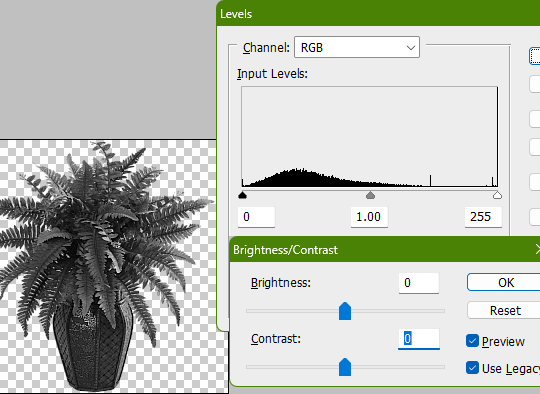
This timelapse demonstrates how the Brightness/Contrast adjustment is basically equivalent to using the Levels one when used this way
I say nearly identical because raising the contrast all the way to 100% with Brightness/Contrast makes it actually identical with the Threshold adjustment tool. The black and white input levels sliders can't fully join in the middle because of the gray input level slider occupying the space, hence why there are some stray gray pixels even when pushing them to their limits.

Well, there could be several reasons explaining why there could be gray pixels other than the contrast not being high enough to clip them, but I'll spare you another needlessly complicated and overly technical rambling on how I can tell it's most definitely the Levels adjustment tool always.
This post is getting a little long, so I'll stop here and elaborate a little more on pertinent things under the read more link, like semi-opaque pixels, scaling down, sharpening, and the gamma slider. Also here's the potted plant PSD if you wanna check it out I guess.
ADDENDUM
Semi-opaque pixels
When separating objects from a background, it's usually easiest to do so with a magic wand selection tool, which selects regions of similar colors. There's an option to make the selection anti-aliased, smoothing the edges of whatever you've cropped. Unchecking it will make the pixels hard and jagged. The wine bottle and picnic basket are a good example of each, respectively.

If you've already cropped out something with anti-aliasing enabled, there's still a way to sharpen the edges after the fact. Duplicating the layer multiple times will increase the semi-transparent pixels' opacity. Do it enough times and they'll eventually become completely opaque. An analogy would be stacking multiple panes of tinted glass on top of each other. Stack enough of them and you wouldn't be able to see through anymore.

These semi-opaque black pixels would appear gray on a white background, and so would semi-opaque white pixels on a black one. That's the reason for the gray pixels around the edges on some of these examples.
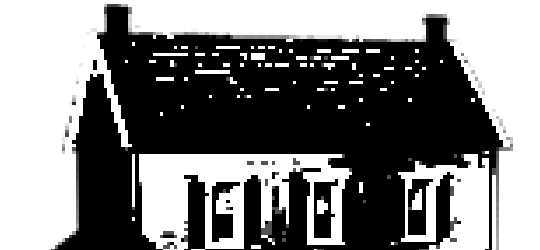
Scaling down/Sharpening
Suppose you've already gone ahead and went through the whole rigamarole of editing the object to be black and white before deciding firmly on the size of it in your composition, and now you think it could be a little smaller. You could always resize it and scale it down, but with the interpolation method set to none/nearest-neighbor, it's going to look kind of shit, and with it set to something else like bilinear or bicubic, the anti-aliasing is going to make it a bit blurry (introducing these gray values). You could increase the contrast again, or you could use the Sharpen filter to do it.
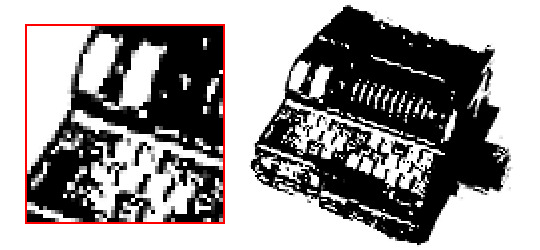
Not to suggest that this particular example was scaled down after editing, it's just the one that looks closest to it since I'm too lazy to make one.

Sharpening repeatedly will bump up the contrast, plus Photoshop's Sharpen filter has the added benefit of hardening any semi-opaque pixels as well, making the edges sharper.
GIMP's Sharpen filter doesn't do that latter part, unfortunately, but if the layer has an opaque white background, it'll do the same.
Gamma slider
This effect might not be so obvious, but really take a good look at these board games:
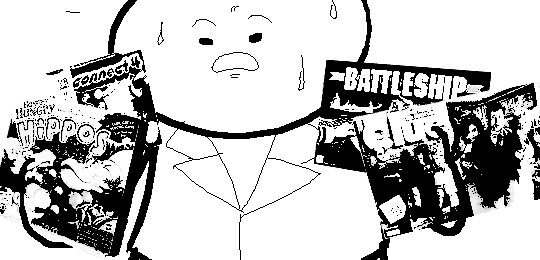
Actually, maybe this Problem Sleuth bonus panel shows what I mean better:

The dark values are cranked up very high, and so are the light values a bit, but there's an inordinate amount of midrange values that are on the lighter side than what would be normal. That's because of the midtones input levels slider, the gray slider, the gamma slider, whatever.
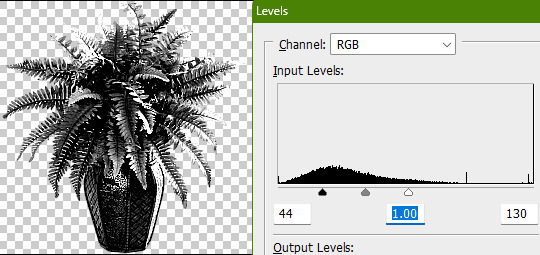

I'm toot tired to explain any more than that, so make of that what you will. The end.
424 notes
·
View notes
Text
Mary: “I love you.”
Sebastian: “What?”
Mary: “I said fuck you, you deaf fiend.”


#soppins#sebastian x mary poppins#black butler#mary poppins#crossover#rarepair#incorrect ship quote#incorrect quotes#Edited images
5 notes
·
View notes
Photo

#images#edited images#images edited by me#Andy Scott#Mick Tucker#Brian Connolly#Steve Priest#Sweet#The Sweet
14 notes
·
View notes
Text

#duck rants about something#im so fecked#thank u @iwantmorelife for the image id !!!#edit before you tell me ''this isnt even relatable'' its not meant to be. i made this to complain about sleeping in before class and ending#up late every time. peace and love
140K notes
·
View notes
Text










I haven’t seen anyone post about this but here’s jerry’s original dialogue vs the remake!
#ITS GROWTH!!#my edit#my screenshots#smb#pm#ttyd remake#mario#goombella#luigi#jerry#dialogue#image#switch#gcn#ttyd#supet mario bros#the thousand year door#pmttyd#paper mario#jerry ttyd#jerry paper mario
49K notes
·
View notes
Text
personal injury lawyer billboards are all like INJURED?

#talks#EDIT: I DID NOT MAKE THIS IMAGE.#This is the “people with blue eyes” meme originally posted by twitter user @Pubby_Kat.
62K notes
·
View notes
Text
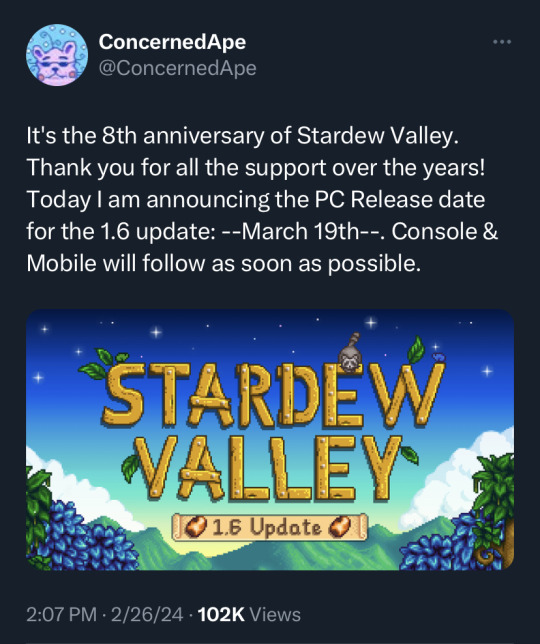
1.6 is coming—see you march 19th!!! 🥹🌱
#stardew valley#can you imagine pouring blood sweat & tears into a game#releasing it for like $15#and then working for 8 more years to add more content without asking for a cent more#for what could have easily been several dlc packs#i love you stardew valley i love you concernedape i love you indie games thank you for being my home all these years#EDIT: added image ID in the alt!!
25K notes
·
View notes
Text

hobie: kill yourself
pavitr: WHAT THE HELL BRO WHAT DID I DO
original format from @ha-youwish in this post!
#across the spiderverse#spiderman atsv#pavitr prabhakar#hobie brown#gwen stacy#miles morales#astv fanart#spiderman#sorry im overtagging so much i just spent way longer on this than i should've#also the post editor seems to have compressed the image to hell so i rly hope it doesn't post so fuzzy#anyways. pav is so so silly#astv#spiderverse#spiderverse fanart#again i'm sorry for overtagging this movie just has SO MANY TAGS#spiderband#spiderman across the spider verse#edited because it suddenly started getting a ton of notes and i hated that i mischaracterized pavitr in it
72K notes
·
View notes
Note
Rowling isn't denying holocaust. She just pointed out that burning of transgender health books is a lie as that form of cosmetic surgery didn't exist. But of course you knew that already, didn't you?
I was thinking I'd probably see one of you! You're wrong :) Let's review the history a bit, shall we?
In this case, what we're talking about is the Institut für Sexualwissenschaft, or in English, The Institute of Sexology. This Institute was founded and headed by a gay Jewish sexologist named Magnus Hirschfeld. It was founded in July of 1919 as the first sexology research clinic in the world, and was run as a private, non-profit clinic. Hirschfeld and the researchers who worked there would give out consultations, medical advice, and even treatments for free to their poorer clientele, as well as give thousands of lectures and build a unique library full of books on gender, sexuality, and eroticism. Of course, being a gay man, Hirschfeld focused a lot on the gay community and proving that homosexuality was natural and could not be "cured".
Hirschfeld was unique in his time because he believed that nobody's gender was either one or the other. Rather, he contended that everyone is a mixture of both male and female, with every individual having their own unique mix of traits.
This leads into the Institute's work with transgender patients. Hirschfeld was actually the one to coin the term "transsexual" in 1923, though this word didn't become popular phrasing until 30 years later when Harry Benjamin began expanding his research (I'll just be shortening it to trans for this brief overview.) For the Institute, their revolutionary work with gay men eventually began to attract other members of the LGBTA+, including of course trans people.
Contrary to what Anon says, sex reassignment surgery was first tested in 1912. It'd already being used on humans throughout Europe during the 1920's by the time a doctor at the Institute named Ludwig Levy-Lenz began performing it on patients in 1931. Hirschfeld was at first opposed, but he came around quickly because it lowered the rate of suicide among their trans patients. Not only was reassignment performed at the Institute, but both facial feminization and facial masculization surgery were also done.
The Institute employed some of these patients, gave them therapy to help with other issues, even gave some of the mentioned surgeries for free to this who could not afford it! They spoke out on their behalf to the public, even getting Berlin police to help them create "transvestite passes" to allow people to dress however they wanted without the threat of being arrested. They worked together to fight the law, including trying to strike down Paragraph 175, which made it illegal to be homosexual. The picture below is from their holiday party, Magnus Hirschfeld being the gentleman on the right with the fabulous mustache. Many of the other people in this photo are transgender.

[Image ID: A black and white photo of a group of people. Some are smiling at the camera, others have serious expressions. Either way, they all seem to be happy. On the right side, an older gentleman in glasses- Magnus Hirschfeld- is sitting. He has short hair and a bushy mustache. He is resting one hand on the shoulder of the person in front of him. His other hand is being held by a person to his left. Another person to his right is holding his shoulder.]
There was always push back against the Institute, especially from conservatives who saw all of this as a bad thing. But conservatism can't stop progress without destroying it. They weren't willing to go that far for a good while. It all ended in March of 1933, when a new Chancellor was elected. The Nazis did not like homosexuals for several reasons. Chief among them, we break the boundaries of "normal" society. Shortly after the election, on May 6th, the book burnings began. The Jewish, gay, and obviously liberal Magnus Hirschfeld and his library of boundary-breaking literature was one of the very first targets. Thankfully, Hirschfeld was spared by virtue of being in Paris at the time (he would die in 1935, before the Nazis were able to invade France). His library wasn't so lucky.
This famous picture of the book burnings was taken after the Institute of Sexology had been raided. That's their books. Literature on so much about sexuality, eroticism, and gender, yes including their new work on trans people. This is the trans community's Alexandria. We're incredibly lucky that enough of it survived for Harry Benjamin and everyone who came after him was able to build on the Institute's work.

[Image ID: A black and white photo of the May Nazi book burning of the Institute of Sexology's library. A soldier, back facing the camera, is throwing a stack of books into the fire. In the background of the right side, a crowd is watching.]
As the Holocaust went on, the homosexuals of Germany became a targeted group. This did include transgender people, no matter what you say. To deny this reality is Holocaust denial. JK Rowling and everyone else who tries to pretend like this isn't reality is participating in that evil. You're agreeing with the Nazis.
But of course, you knew that already, didn't you?
Edit: Added image IDs. I apologize to those using screen readers for forgetting them. Please reblog this version instead.
#transgender#trans history#transsexual#transphobia#Magnus Hirschfeld#holocaust#holocaust denial#book burning#j.k. rowling#jk rowling#just in case you missed what i mean by all this: go fuck yourself anon :)#trans people have always existed#and we will always exist#if you really wanna pick a fight with me over well-documented history then you better bring in some sources to back your shit#queer history#queer#lgbt+#lgbta+#lgbt#lgbt history#edit: i finally got around to those damn image IDs. i am so very sorry for totally forgetting that's my bimbo moment of the month#also real quick i thought about adding an image of the actual building but the only one i can find has a Nazi parade in front of it#it was taken the day of the book burning raid and honestly if i were to include it then i'd add it to the first few paragraphs#and i think the story's better told when you uphold the hope Magnus Hirschfeld and all the researchers he worked with had#also keeps being brought up: yes Hirschfeld was a eugenicist. it was a popular belief set that was only discredited after WW2#Hirschfeld died in 1935. he literally didn't live long enough to see science turn against those beliefs and practices#considering how he changed his mind on transitions i like to think he would've changed his mind on eugenics too if he'd lived
17K notes
·
View notes
Text
Putting powdered sugar on the post below
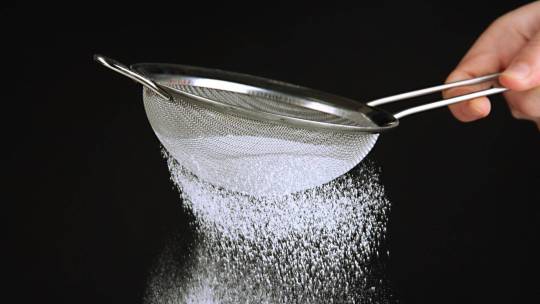
#dual post#enchanted dumbassery#edited to add an image id***#also yes i did steal these pictures from another post
260K notes
·
View notes
Text
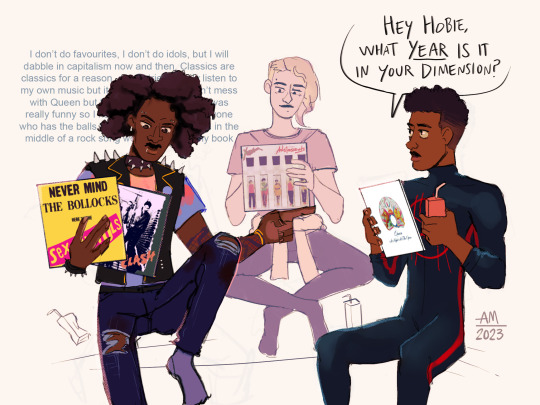
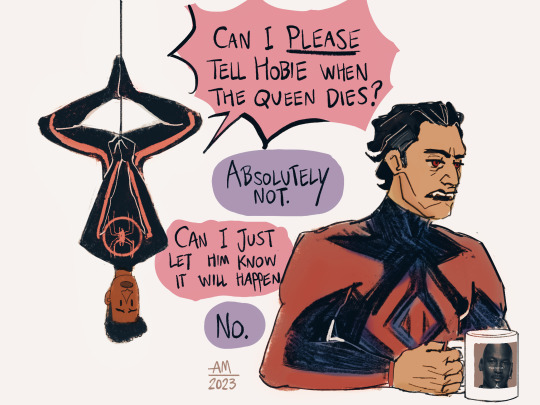
While listening to Hobie's contemporary records an incredibly vital question comes up… does he know?
#into the spider verse#across the spider verse#across the spider verse fanart#miles morales#hobie brown#spider punk#gwen stacy#spider gwen#miguel o'hara#mine#fanart#marvel#hoping miguel doesn't look too pale in the second image i just threw a gradient map on my sketch bc im exhausted#edit 14 Jun recolored it entirely
43K notes
·
View notes
Note
Any interesting facts you have from studying how the photocollage environments and objects were made?
I'm unsure if this one qualifies as interesting, but it's an amusing fact nonetheless. Hussie's flagrant disregard of stock image licenses and exploitation of transformative use really comes to light when you see how often the Dreamstime watermark crops up in panels.
They used to overlay their giant logo over all of their images to coerce you into paying for the originals, but let's be honest, that never stops the more strong-headed and miserly from using them as-is anyway or just editing it out. I guess at some point they realized it was marginally more effective to use diagonal text and lines all over as the watermark.


You can faintly make it out on the pattern used as the wallpaper in the dreamtowers, on one of the appearifier's monitors, and on one of John's birthday gifts.


I also managed to find the image used for the alchemized bottle of MAGNETIC WODKA on Dreamstime. It might just be my imagination, but it looks to me like he edited out something around the center there...

Here you can just barely make out part of the spiral since he cropped out the original clock hands along with it.

I just happened to come across this one when looking up references for isometric buildings.
It's possible that he specifically entered search queries on Dreamstime, but I think it's more likely Dreamstime was just the predominant stock image website in general image search results. Or at the very least the one that had the most palatable watermark to work with.
592 notes
·
View notes
Text


"content creator" is a corporate word.
we are artists.
#anti ai#fuck ai#artists on tumblr#please do not call me or any artist a content creator#i'm an artist. a fanartist. a designer. but not a content creator#ai clowns in my replies will be deleted and blocked without response so do not waste your breath#you are not an 'artist' for generating an image any more than you are a chef for ordering from a restaurant. someone Else did the work.#owen dennis just deleted all his blue sky stuff again and i hate that he does that because he makes such interesting comments#about the entertainment industry lmao i need to just. start screenshotting every smart thing he says#anyway thats why i decided to finally make this when its been sitting in drafts for a few months#owen dennis#edit - if you dont know who owen dennis is he's the creator of one of the best animated series of the last 20 years (Infinity Train)#he's very open about talking about art and the entertainment/animation industry on social media and in his newsletter and hes so cool 4 it
9K notes
·
View notes
Photo

Brian Connolly ca. 1974. Image edited by me (original after the cut).

Poster published in Popfoto (a Dutch magazine) in November of 1974
6 notes
·
View notes
Text
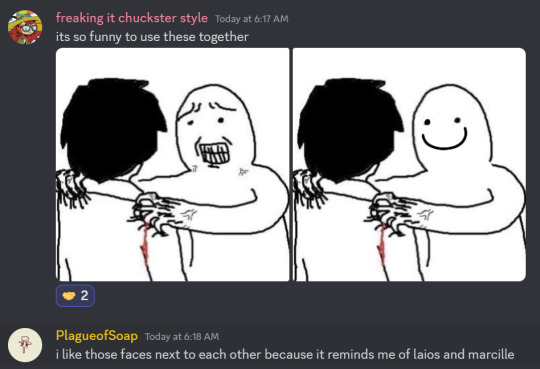
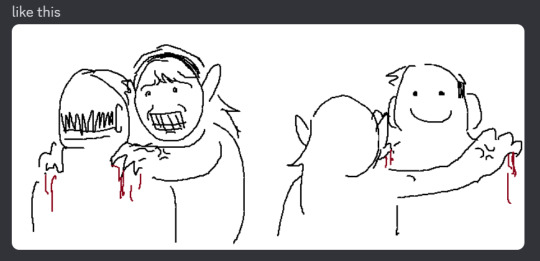
they're amusing to me
#dungeon meshi#delicious in dungeon#dunmeshi#marcille donato#laios touden#i love when these two interact its so funny#deciding to finally post my doodles because they're too good to be left in the dark to collect dust#L+M#edit: YES I KNOW ITS AYIN!!!! CONFIRMED!! 🥳#various images by yours truly#laimar
9K notes
·
View notes
Text


Dinner at Grian's
#art out the oven#grian#hermitcraft#artists on tumblr#<- this is the most 'artists on tumblr' piece i've made‚ i deserve to tag it /lh#I will reblog this with thoughts and process tomorrow probably. i spent 19 hours on this i'm allowed to ramble a little as a treat <3#edit: made the big image a little better quality hopefully this doesn't take a year to load for people
4K notes
·
View notes